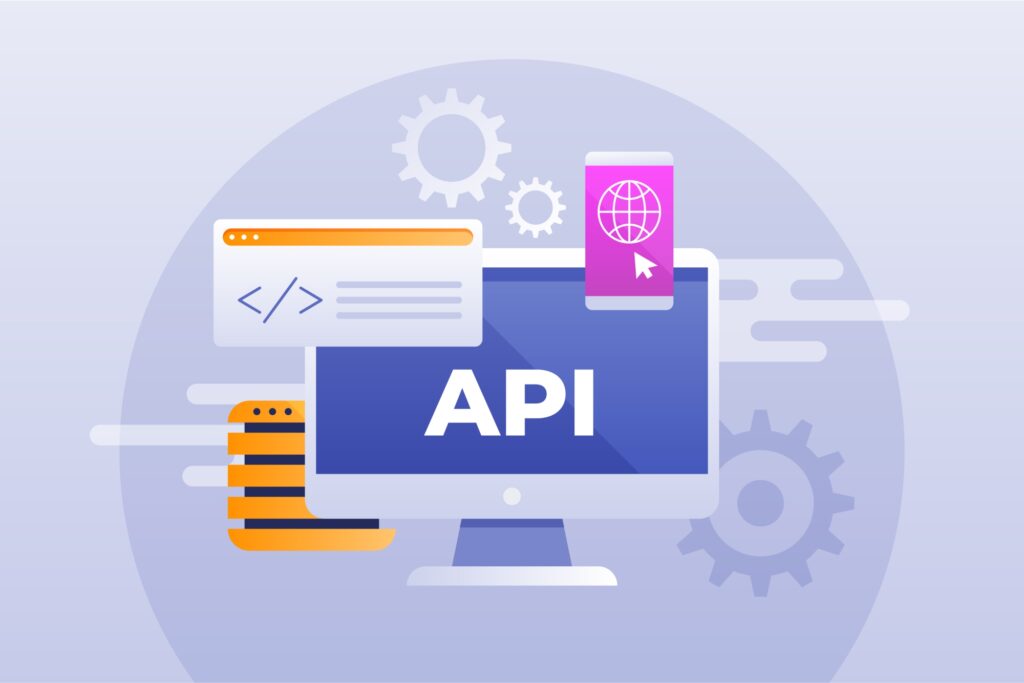Test management tools can automate many steps involved in the planning and execution of a project, from scheduling tasks and assigning them to allocating resources or monitoring company milestones. With this type of tool, project managers can implement a top-down work model in which colleagues collaborate on individual tasks one at a time. That is a collaboration model in which contributions to projects are synchronized in real-time and are compatible with different work styles.
This article examines the 21 best-rated free management tools in alphabetical order. To prepare this list, all project management tools that had a free premium version and a website in India have been taken into account. You can consult the complete methodology at the end of the article.

1. Semrush: Increase your online visibility
It is an all-in-one platform that helps you increase your online visibility and marketing performance. 1 Crore digital marketers have used Semrush tools and the platform is a marketing staple for 30% of Fortune 500 companies.
2. AI Editorial Assistant
It is used to generate over 75 types of content, including articles, images, social posts, Google Ads descriptions, and email newsletters. Therefore, it can help you save time and get better results across all the best management tools. After registering, choose the tool you want to use. Then fill out the form to create an effective notice. Click ” Generate “.
3. Media Monitoring
It allows you to follow what people are saying about your brand on the Internet. You can use it to measure the success of your PR campaigns, identify reputational threats, and build better relationships with brand ambassadors. Or track your competitors’ mentions. This provides valuable information about what is working for your rivals and what is not. This way you can shape a more effective marketing and communication strategy. To get started, enter your brand name in the “Keyword” section. Then, choose your language and click
” Create project “.
4. AI Social Content Generator
This app makes it easy to create engaging videos, images, and carousel posts for social media. Therefore, it is one of the best management tools if you are looking to get more followers and engagement on platforms like LinkedIn, Instagram and Facebook. Before you start creating, set your brand’s colours, font, social handle, website, hashtags, and logos in the “Manage Brand” section. This way, the app can automatically customize your posts to fit your brand.
5. AdClarity
With the AdClarity app, you can perform detailed analysis of your competitors’ display advertising, social media advertising, and video advertising campaigns. To start, search for the name of a rival advertiser. Then, choose the channel(s), device(s), time slot, and country that interest you.
You will see it immediately:
- Estimated impressions
- Estimated costs
- Distribution of ad types
- Distribution of ad purchasing methods
6. Audience Intelligence: Segment your target audience
The Audience Intelligence app provides detailed information about audiences on X (formerly Twitter). Which can help you engage with your social followers and other audiences more effectively. Just enter your X handle. (If you don’t have many followers, you could analyze the audience of a competitor or a relevant influencer instead.) Next, the app will collect information about the demographics of your audience. Plus your favorite brands, influencers, and content sources.
7. Google Search Console: Measure search performance
While other tools offer a lot of search data, Google Search Console (GSC) tells you everything. This is why it is often considered the most important source of truth for SEO and search engine marketing metrics. Use GSC tools to find high- or low-performing pages and keywords and ultimately maintain your website’s presence in Google search results.
More specifically, connect GSC to your site to:
- Review your performance over time in Google search results
- Detect technical SEO errors
- Find out which pages Google can crawl and index on your website
- Submit sitemaps and individual URLs for crawling
8. Google Docs: Collaborate on content
Tools that let you create and collaborate on content make it easy for teams to contribute to the same web copy, landing pages, blog posts, and more, no matter how diverse their skill sets are. Google Docs is an example of this category. It allows you to share documents with your team or external users (such as freelancers or clients) using only email addresses, and set user permissions to keep sensitive information secure.
9. Mailchimp: Boost your email marketing campaigns
If you use Google Docs to collaborate on email marketing copy, you’ll need email marketing software to format and distribute your content. Mailchimp, with its integration into Google Docs, is the perfect tool for creating, running, and managing email campaigns that capture your audience’s attention and engage them.
The tool’s drag-and-drop interface, templates, and editing tools allow you to produce and send professional-looking emails without requiring graphic design experience or coding skills.
10. Adobe Marketo Engage: Run marketing campaigns
at scale
Adobe Marketo Engage allows you to identify your target customers and create personalized content to engage them across multiple channels from one place. Its marketing and lead generation platform has a ton of features that help you automate and measure your marketing tasks throughout the buyer’s journey, making it faster and easier to build brand awareness, engage customers, and create advocates. Of the brand.
11. Canva: Create engaging visual content
Need a quick graphic for a blog post or social media ad, but don’t have design experience? Turn on Canva. It is a graphic design tool that makes it easy to create visual assets for your content marketing and social media posts.
A Canva account includes:
- Thousands of templates, elements, fonts and images
- Tools for sharing and scheduling social networks
- Internal collaboration features
- Options to download content as JPG, PNG, PDF, SVG, MP4 or GIF
12. Buffer: Schedule social media posts
You’ve created some great visual assets with Canva, and now you want to publish them on all your social media channels. Buffer is a simple social media management tool that allows you to schedule, post and interact with your target audience. You can use it to compose and schedule posts on all the big social media platforms, including Facebook, X, LinkedIn, Instagram, and TikTok.
13. HubSpot: Understand and follow your customers
Most managements work with long sales cycles, making it difficult to track buyers’ needs and the status of long-term deals. HubSpot CRM (Customer Relationship Management) gives you a high-level view of your leads, customers, and ongoing deals, so you know how and when to engage and deliver value. Even if you communicate with your target audience through various channels.
14. Brandwatch: See who’s talking about your brand
Brandwatch aggregates the posts and comments in which Internet users talk about your brand, making it easy to take the pulse of the opinions of your target audience. It has social listening and customer intelligence features that provide insights based on the real conversations happening in your marketing channels. These online conversations help you better understand buyers’ needs and motivations, so you can tailor your content to be more engaging.
15. Google Analytics:
It tells you everything you need to know about how users find and interact with your website, so you can improve the user experience. The valuable insights from GA are virtually endless, but some of the most accessible and immediately useful metrics for new users are:
- Sessions: Measures user interaction on a site over a continuous period.
- Page views: Indicates the total number of pages viewed by users.
- Bounce rate: Measures the percentage of visits to a single page in which users leave without interacting.
16. Slack
It is a messaging app that facilitates real-time team communication and organizes collaborative activities – such as discussions, file sharing, and project work – into organized, easy-to-find channels. The resulting benefit is fewer silos and therefore more fluid collaboration on marketing campaigns.
17. Unbounce
It is a powerful content creator that marketers can use to create and optimize landing pages without coding knowledge. Take advantage of its intuitive page builders (the drag-and-drop Classic Builder and the AI-powered Smart Builder) to quickly design professional, high-converting landing pages.
18. Grammarly
It is an AI-powered writing app that you can use to quickly create polished, professional marketing copy without needing any writing experience. Most people know Grammarly as an in-browser spelling and grammar checker, but it helps marketers in other ways.
Use it for:
- Detect misused and commonly confused words in blog posts and articles
- Make your internal and external communications concise and easy to understand
- Make your landing page content and CTAs more attractive to readers
19. Chili Piper
It is a set of lead acquisition tools that eliminates the back-and-forth of scheduling, helping you organize meetings, engage leads, and achieve conversions faster.
Includes four basic products:
- Instant Booker (booking links for management and customer service representatives)
- Handoff (advanced track routing)
- Form Concierge (web forms integration for automatic scheduling)
- Distro (CRM automated routing)
20. Hunter
It saves you time manually searching for email addresses and creating outreach channels while giving you the data you need to send highly personalized emails. Give Hunter a domain or company and he’ll find the best person to contact there, so you can save yourself the chase.
Hunter also allows you to verify email addresses to prevent bounces and obtain contact information, such as the contact’s name, title, and social media accounts. In other words, Hunter gives you a valuable advantage in management conversations.
21. Livestorm
It is a video engagement platform for managing virtual events and training from start to finish. All from your browser. Nine in ten marketers say video has helped them increase leads and user understanding, according to a State of Video Marketing Report by Wyzowl. And 87% say that video has boosted management work growth. You can use Livestorm tools to get similar results for your business. The platform gives you the tools to create customer demos or webinars and interact with viewers in real-time to answer questions that might otherwise prevent them from converting.
Conclusion
Good Management tools are crucial to streamlining your workflow and improving marketing effectiveness; there are thousands to choose from. However, you don’t have to choose just one. Instead, aim to build an integrated technology stack that works together to speed up marketing processes, provide valuable insights to refine your best management strategy, and enable you to deliver more personalized and engaging customer experiences.
Get started with these best free management tools to increase your search presence, get content ideas, study competitors, and review performance.




